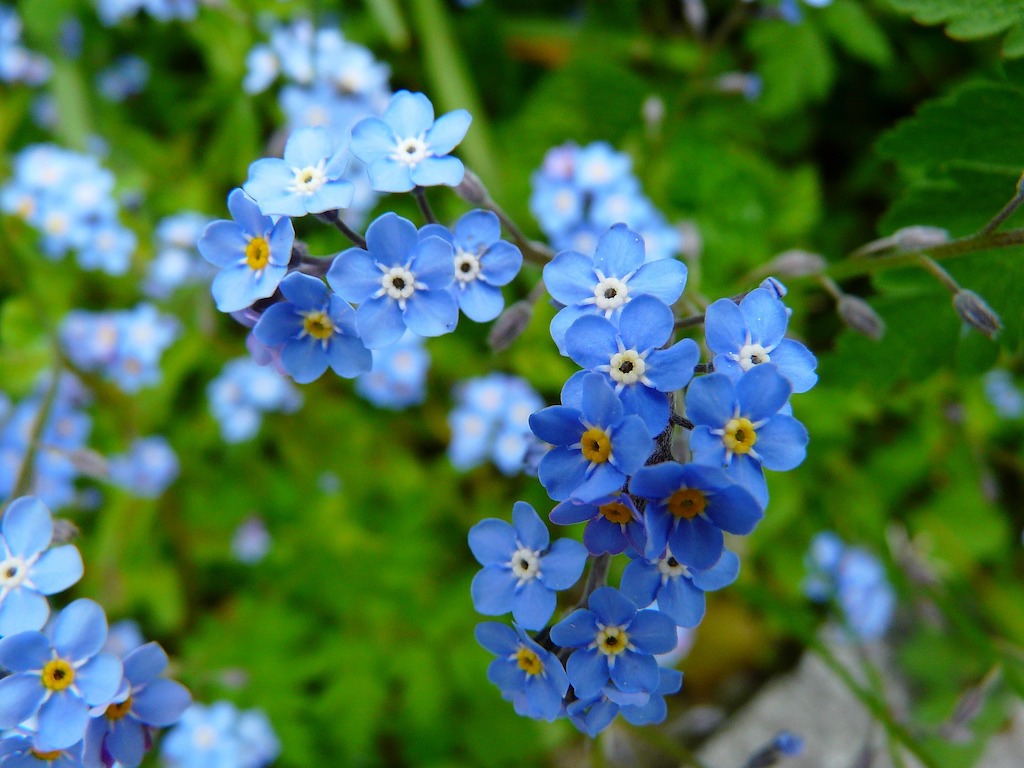More than 1,500 species of wildflowers color the Alaskan landscape. Bursting forth from lush valleys and alpine meadows during the northern summer, the flora here blooms all through the season from mid-June into August. Experience Alaska’s summer splendor as we survey a tapestry of mixed forest and the wildlife within, glacier-fed lakes and rivers, ice-crowned peaks and the wonderous wildflower meadows of this glorious state. Alaska Explorer: Kenai Peninsula & Prince William Sound is limited to just 8 travelers and offers an intimate encounter with Alaska’s rugged wilderness, from North America’s northernmost rain forest to boreal forest and tundra-covered alpine heights.
Our Alaskan adventure begins with a hike to Winner Creek Gorge next to your chateau-style hotel. This temperate rain forest is located in a lush valley at the base of Mount Alyeska. Crossing a wooden bridge over a gorge of thundering blue water, our Expedition Leader points out plants along the way and explains their place in the Alaskan landscape. Later in the trip, we’ll visit the Kenai Peninsula, wandering past glacier-fed turquoise lakes and learning about the varied vegetation found at different elevation levels in Kenai. Hiking through a diverse mosaic of habitats in Kenai National Wildlife Refuge, we stop frequently to study plants, observing how the ecosystems change from boreal forest to subalpine and alpine habitats.

As you head into Alaska’s wilds, you’re sure to pass a sea of blue Arctic lupine or pink river beauty along the roadside. Flowers found at lower elevations in coastal forests, lowland meadows and bogs include wild iris, chocolate lily, bog rosemary, white dwarf dogwood, northern bluebell, woolly geranium, twinflower, wintergreen and shooting star. Inland, in harsher climates, you’ll find wild sweet pea, mountain harebell, cinquefoil, poppies and alpine azalea. Some of Alaska’s most notable wildflowers are listed below.

Fireweed
By late July, this brilliant purple flower blankets the meadows and mountainsides of Alaska. The state’s most famous flower, fireweed is named for its pyrophytic properties, and it is often the first plant to emerge from the ashes of a forest fire. Sunset is a show-stopping time to photograph this flower that erupts across the valleys. Where there is fireweed, there is wildlife! Black-tailed deer, moose, caribou and tundra hares browse on the flowery stalks, and brown bears romp in the meadows, feeding on the tender young shoots in June. Pollinators including bumblebees, butterflies and hummingbirds are drawn to the sweet nectar. Honey and jams can be made from the flower nectar and tea made from the fireweed leaves. The spring shoots can also be eaten like asparagus.

Forget-me-not: Alaska’s State Flower
These exquisite tiny flowers dot the mountain meadows, with rounded blue petals, an inner ring and a yellow center. Most frequently spotted in midsummer, one of the best places to view the alpine forget-me-not is the Chugach National Forest, which we explore on our adventure. It was adopted as the floral emblem in 1917, long before statehood, before becoming the official state flower in 1949. The blue backdrop of the Alaskan flag is said to represent both the sky and this much-loved flower.
Arctic Rose
The Arctic rose blossoms deep pink in mid-June. Also known as the prickly rose or wild rose, the rose hips of these fragrant flowers can be made into jellies and syrups. Three rose hips contain more Vitamin C than an orange, and miners once used these to prevent scurvy during the dark winter months. Animals such as bears and coyotes feed on the vermilion-colored rose hips in autumn. Tea can be made from the petals, leaves and roots, and the young shoots can be peeled and eaten in spring.
A Note on Berries in Alaska
From late July to September, bushes that once produced delicate pale pink and white blossoms transform as berries ripen. In shades of ruby and sapphire, these luscious jewels dot the landscape—Alaska is a wild berry lover’s dream. If you remember reading Blueberries for Sal, you’ll know that bears are never far from a ripe berry bush! Alaska’s brown bears are omnivorous, and their salmon diet is supplemented with all types of berries. Some Alaska Natives have paid close attention to the plants bears seek. Bearberries, named for the particular fondness bears have for the fruit, have been used by tribes as food and medicine. The Yup’ik, Dena’ina and Koyukon Athabascans have traditionally harvested many berry varieties as an antioxidant-packed food source, including bright orange salmonberries along with the tender shoots of the plant.
There are over 50 types of edible berries in Alaska! A selection is listed below.
- Bearberry
- Bog Blueberry (also known as Bilberry)
- Bunchberry
- Chokecherry
- Cloudberry
- Crowberry
- Currants
- Elderberry
- Gooseberry
- Highbush cranberry
- Huckleberry
- Lingonberry
- Nagoonberry
- Salmonberry
- Soapberry
- Strawberry
- Thimbleberry
- Red Raspberry
- Serviceberry (also known as Juneberry)
- Watermelon Berry
During our explorations of the Kenai Peninsula, we will learn about authentic Alaskan culture and traditions, including subsistence bush living and how local people gather berries and plants. Our guide will reveal some favorite sites not known to most visitors as we get an inside look at a part of Alaska most travelers don’t see. On our journey through this vast and grand state, you’ll gain memories of a lifetime as you soak in the beauty of an Alaskan summer.




























